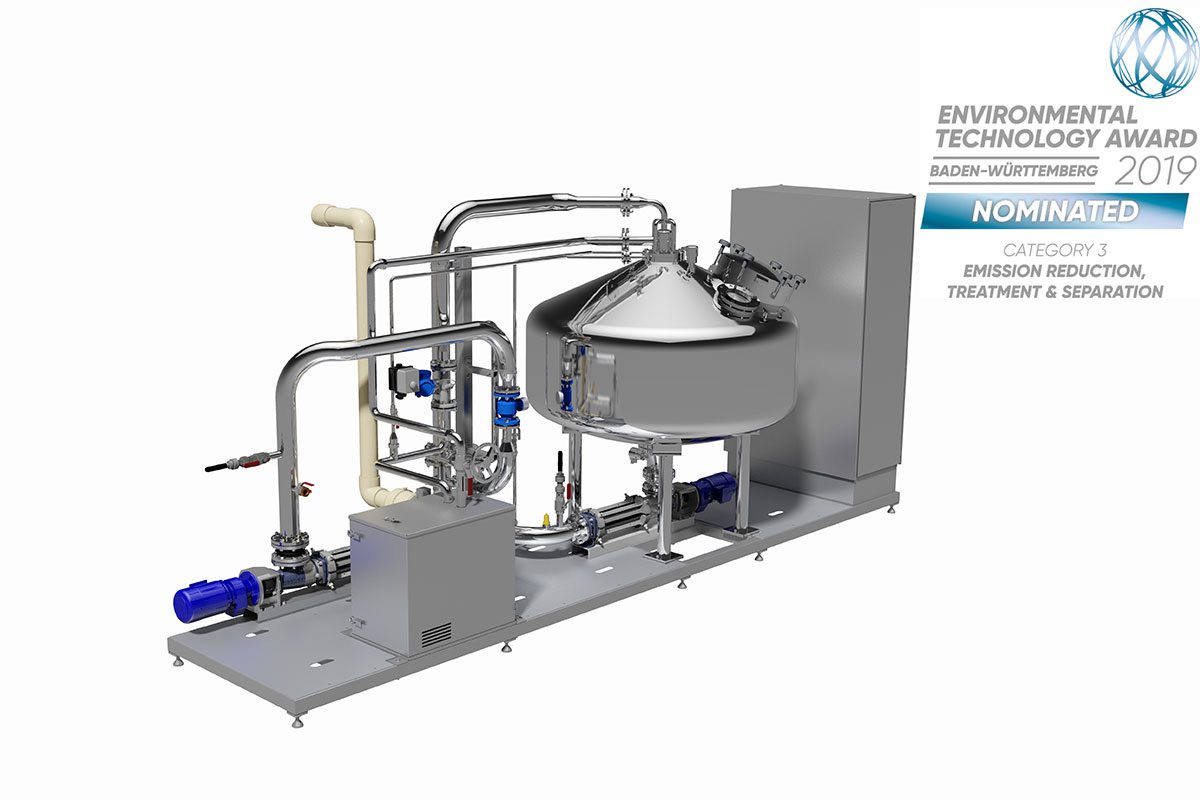ELIQUO is a group of companies operating in the field of municipal water, wastewater and sludge treatment. Together, they provide a comprehensive range of solutions: from EPC contracting in Germany and the Netherlands, to technology licensing and implementation in the UK. In addition, they have developed proprietary sludge technologies, such as EloVac®– P, that provide simple and innovative solutions to the wastewater sector.
An interview with Ulrich Knörle of ELIQUO – the inventor of EloVac®– P.
What is EloVac® – P?
EloVac®– P is the only vacuum degassing technology with simultaneous phosphate precipitation for digested sludge in the market.
What is sludge vacuum degassing and how does it work?
Vacuum degassing is a process where a vacuum extracts residual gas from a media, in this case digested sludge. Anaerobically digested sludge releases residual methane and carbon dioxide to the atmosphere – methane emissions from sludge treatment make up 75% of the diffuse CO2-equivalent emissions (Gärtner 2017). With vacuum degassing, a pump continuously extracts the residual gasses inside a reactor tank for beneficial reuse such as additional biogas/electricity. The retention time of the sludge in the reactor tank is controlled. The special feature of EloVac®– P is the simultaneous phosphate precipitation in the reactor tank by dosing magnesium chloride directly into the tank.
How did you come up with this idea and what does it mean to you?
ELIQUO is foremost a water solutions company with the goal to provide technologies to the market that preserve natural water resources. For a long time, I worked in the field of anaerobic wastewater treatment. I was always amazed how these tiny anaerobic microorganisms can produce so much gas to generate Megawatts of electricity. The methane in the biogas is a valuable energy source, but it can also be a source of potent greenhouse gas emissions; that is where I started thinking ‘how can a water company contribute to reduce greenhouse gas emissions?’ I had the opportunity to investigate how much gas is still contained in digested sludge, and to my surprise, it was much more than I had expected. The answer was clear: we extract the gas from the liquid to make it available for utilisation without releasing it into the atmosphere.
Another problem water companies typically face, particularly those with advanced digestion, is the elevated phosphate concentration in the digested sludge, which negatively affects the achievable percent solids in the cake after dewatering. Here, we also investigated possibilities to precipitate the soluble phosphate in the sludge to enhance dewatering and increase the quality of the cake. With conventional technologies, enormous tanks are necessary to allow the growth of the precipitates and finally separate the crystals from the sludge. EloVac®– P’s approach is different: precipitation of the phosphate, no growth of the precipitates and no separation of the crystals. The benefits of this approach are unique: very small footprint (50 times smaller reactor tank), positive effect on dewatering, reduction of polymer consumption and no uncontrolled struvite scaling downstream. In addition, because the miniscule struvite crystals remain in the sludge, the quality of biosolids cake improves as a plant available fertiliser for land application.
We recently received a nomination for the Environmental Technology Award of the German Federal State of Baden-Württemberg. This is a clear sign that EloVac®– P is on the right track to help address the challenges we are currently facing with climate change and resource efficiency. We also filed for a patent application of the technology earlier this year.
What kind of financial and emissions savings can be achieved?
From the aggregated benefits of better dewatering, reduced polymer consumption and additional biogas production; and because of the simplicity and compactness of the system, the payback for water companies can be between one to three years.
Moreover, based on our experience with the full-scale implementation in Lingen Germany, plants can expect approximately a 25% reduction in their overall carbon footprint simply by implementing vacuum degassing.
In what type of plants can this system be installed?
Currently, we are focusing on municipal anaerobic sludge digestion. Nonetheless, in addition to the benefits already mentioned, vacuum degassing can also improve the overall sludge digestion process. For example, one area we are currently investigating is how vacuum degassing can improve sludge density and thus increase digester capacity. Therefore, the benefits are not limited to municipal plants – any type of anaerobic sludge digestion where a certain viscosity of the sludge is not exceeded, can also benefit from vacuum degassing.
In which countries are these systems currently being installed?
The first full-scale plant is running at the wastewater treatment plant in Lingen, Germany. Outside of Germany, through our sister companies in the United Kingdom, the Netherlands and the United States, the technology will be available, as it has generated a lot of interest. A pilot plant will be available in North America by end of this year. This plant will have a capacity of ca. 20 m³/h, which represents the sludge flow of a municipal wastewater treatment plant with a capacity of ca. 400,000 PE. We are in discussions with various water companies in the UK as well who are interested in piloting the technology, and we are still actively seeking more pilot partners in the UK and across Europe!
For more information about EloVac®– P, please contact Ulrich Knörle: ulrich.knoerle@eliquostulz.com or +49 751 359785-11








